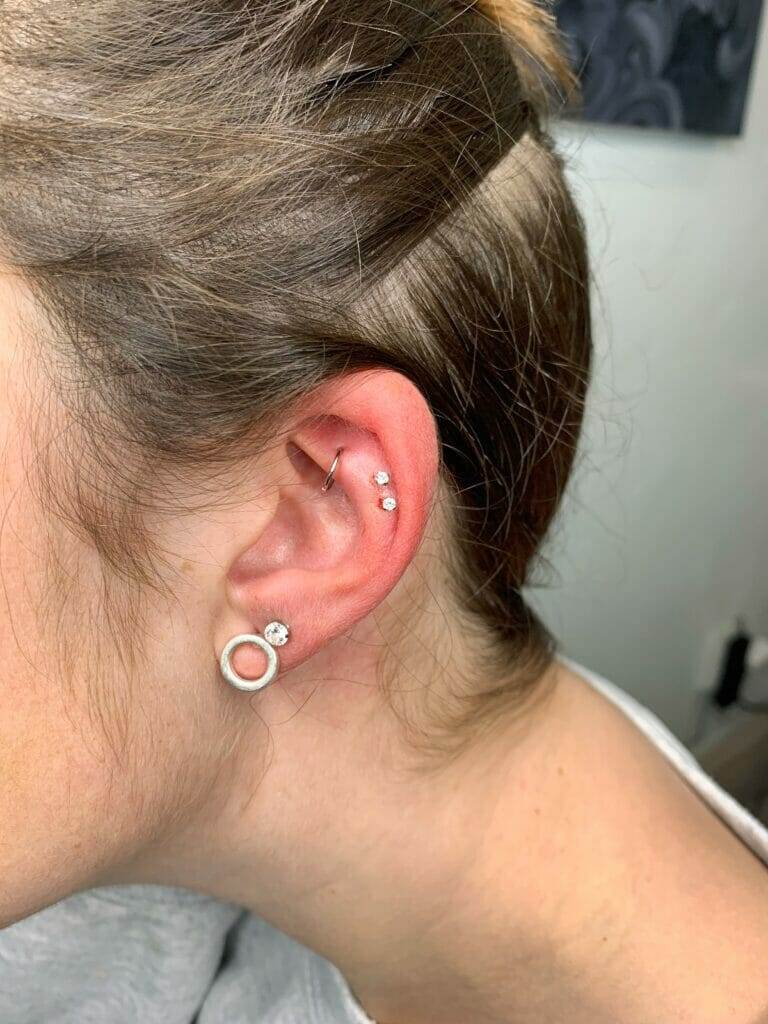Body piercing has been a popular form of self-expression for centuries. From earlobe piercings to more adventurous placements like nose, lip, and belly button piercings, people have been adorning their bodies with jewelry as a way to express their individuality and style. However, one of the biggest concerns people have when considering a piercing is the pain factor. Understanding the different types of pain associated with piercing and how to manage it can help make the experience more enjoyable.
The Importance of Proper Preparation Before Getting Pierced
Proper preparation before getting pierced is crucial for minimizing pain and reducing the risk of complications. One of the first steps in preparing for a piercing is researching the piercing studio. It’s important to choose a reputable studio that follows strict hygiene practices and uses sterile equipment. Reading reviews and asking for recommendations from friends can help ensure that you choose a safe and clean environment for your piercing.
Another important aspect of preparation is choosing an experienced piercer. A skilled piercer will not only minimize pain during the piercing process but also reduce the risk of complications such as infections or improper placement. Take the time to research different piercers in your area and ask about their experience and qualifications before making a decision.
Lastly, it’s essential to follow any pre-piercing instructions provided by the piercer. This may include avoiding certain medications or substances that can thin the blood, as well as properly cleaning the area to be pierced. By following these instructions, you can help ensure that your body is in the best possible condition for a successful piercing.
Choosing the Right Piercing Studio in San Diego
If you’re considering getting a piercing in San Diego, it’s important to choose the right piercing studio. San Diego is home to many reputable studios that prioritize cleanliness and safety. When looking for a studio, make sure to visit in person if possible. Look for a clean and well-maintained environment, as this is a good indication of the studio’s commitment to hygiene.
In addition to cleanliness, it’s important to choose a studio that uses sterile equipment. This includes needles, jewelry, and any other tools used during the piercing process. Sterile equipment helps reduce the risk of infections and other complications.
Another factor to consider when choosing a piercing studio in San Diego is the experience of the piercers. Look for studios that employ experienced piercers who have a track record of successful piercings. Experienced piercers are more likely to minimize pain during the piercing process and ensure proper placement of the jewelry.
The Role of Pain Tolerance in Body Piercing
Pain tolerance varies from person to person and can greatly affect the piercing experience. Some individuals have a high pain tolerance and may find the piercing process relatively painless, while others may experience more discomfort. Understanding your own pain tolerance can help you prepare for the piercing process and manage any pain or discomfort that may arise.
If you have a low pain tolerance, it’s important to communicate this with your piercer. They may be able to offer suggestions or techniques to help minimize pain during the piercing process. For example, they may recommend using a numbing cream or taking over-the-counter pain medication before the appointment.
It’s also important to keep in mind that while there may be some initial pain during the piercing process, it typically subsides quickly. The discomfort experienced during the healing process is usually milder and can be managed with proper aftercare.
Understanding the Different Types of Pain Associated with Piercing
There are different types of pain associated with body piercing. The first type is the initial piercing pain, which occurs when the needle is inserted through the skin. This pain is usually sharp and intense but subsides quickly once the needle is removed.
After the initial piercing, there may be some soreness and discomfort in the pierced area. This is a normal part of the healing process and can last for a few days to a few weeks, depending on the individual and the location of the piercing. The soreness may be more pronounced when moving or touching the pierced area.
It’s important to note that if the pain becomes severe or persists for an extended period of time, it may be a sign of infection or other complications. In such cases, it’s important to seek medical attention.
Tips for Minimizing Pain During and After the Piercing Process

There are several tips for minimizing pain during and after the piercing process. One of the most effective ways to manage pain is by taking over-the-counter pain medication before the appointment. This can help reduce any discomfort during the piercing process and in the immediate aftermath.
Using ice packs can also help numb the area and reduce pain and swelling. Applying an ice pack to the pierced area for short periods of time can provide temporary relief.
It’s important to avoid certain activities that can increase pain or prolong the healing process. This includes avoiding swimming in pools or hot tubs, as well as avoiding excessive touching or rotating of the jewelry. Following these guidelines can help minimize pain and promote faster healing.
The Importance of Aftercare in Managing Pain and Promoting Healing
Proper aftercare is crucial for managing pain and promoting healing after a piercing. Aftercare instructions may vary depending on the type of piercing, but generally involve cleaning the pierced area regularly with a saline solution or mild soap and water.
It’s important to avoid using harsh chemicals or alcohol-based products on the piercing, as these can irritate the skin and delay healing. It’s also important to avoid touching or rotating the jewelry excessively, as this can introduce bacteria and prolong the healing process.
Following aftercare instructions provided by your piercer is essential for managing pain and promoting healing. By taking proper care of your piercing, you can minimize discomfort and reduce the risk of complications.
Recognizing Signs of Infection and When to Seek Medical Attention
Infections can occur after a piercing and can cause pain and other complications. It’s important to recognize the signs of infection and know when to seek medical attention.
Some common signs of infection include increased pain, redness, swelling, and discharge from the pierced area. If you notice any of these symptoms, it’s important to seek medical attention as soon as possible. Infections can be treated with antibiotics, but early detection is key to preventing further complications.
It’s also important to note that some discomfort and mild swelling is normal during the healing process. However, if the pain becomes severe or persists for an extended period of time, it may be a sign of infection or other complications. In such cases, it’s important to seek medical attention.
Common Myths and Misconceptions About Body Piercing Pain
There are several myths and misconceptions about body piercing pain that can cause unnecessary anxiety or fear. One common myth is that body piercing is extremely painful. While there may be some initial discomfort during the piercing process, it is typically short-lived and subsides quickly.
Another myth is that certain piercings are more painful than others. While some areas of the body may be more sensitive than others, pain tolerance varies from person to person. What may be painful for one person may be relatively painless for another.
Understanding the truth behind these myths can help ease anxiety about the piercing process. By choosing a reputable piercer, following proper aftercare instructions, and managing pain with over-the-counter medication or ice packs, you can have a positive and enjoyable piercing experience.
Embracing the Pain and Enjoying the Results of Your Piercing Experience in San Diego
While body piercing can be painful, it is also a rewarding form of self-expression. By understanding the pain factor and taking steps to manage it, you can enjoy the results of your piercing experience in San Diego. Proper preparation, choosing a reputable piercing studio, understanding your pain tolerance, and following proper aftercare instructions are all important factors in minimizing pain and promoting healing. With the right mindset and proper care, you can embrace the pain and enjoy the beautiful results of your piercing.
If you’re interested in body piercings, you may also want to check out Embellish PB’s Insider’s Guide to Popular Piercings in San Diego. This article provides a comprehensive overview of the different types of piercings that are popular in the area, giving you a better understanding of the options available to you. Whether you’re considering a traditional ear piercing or something more exotic like a facial piercing, this guide has got you covered. So, if you’re looking to expand your knowledge on body piercings, be sure to give this article a read! (source)






